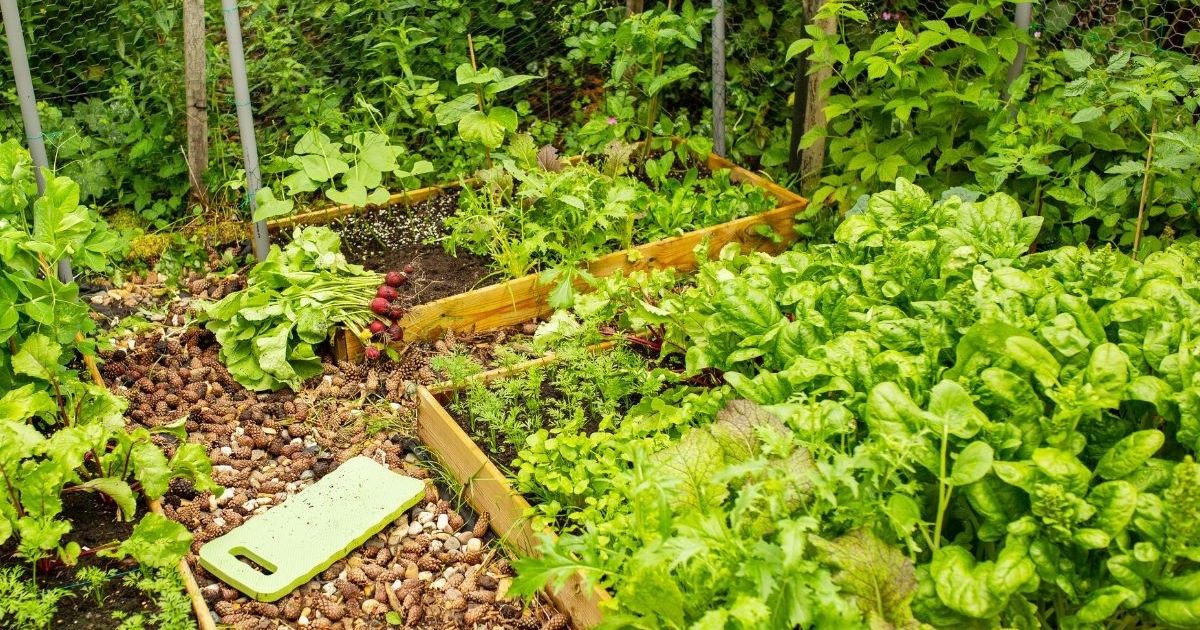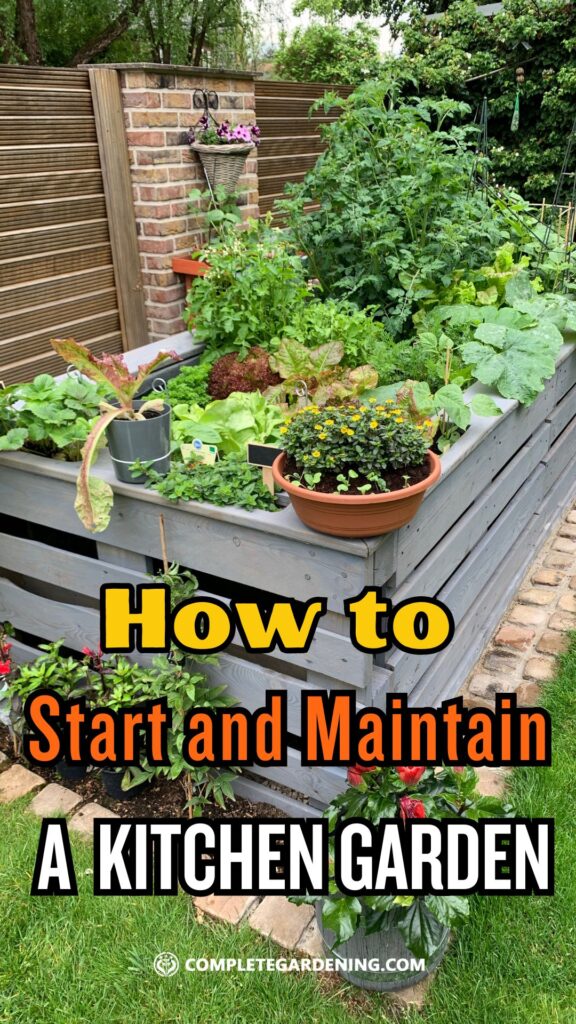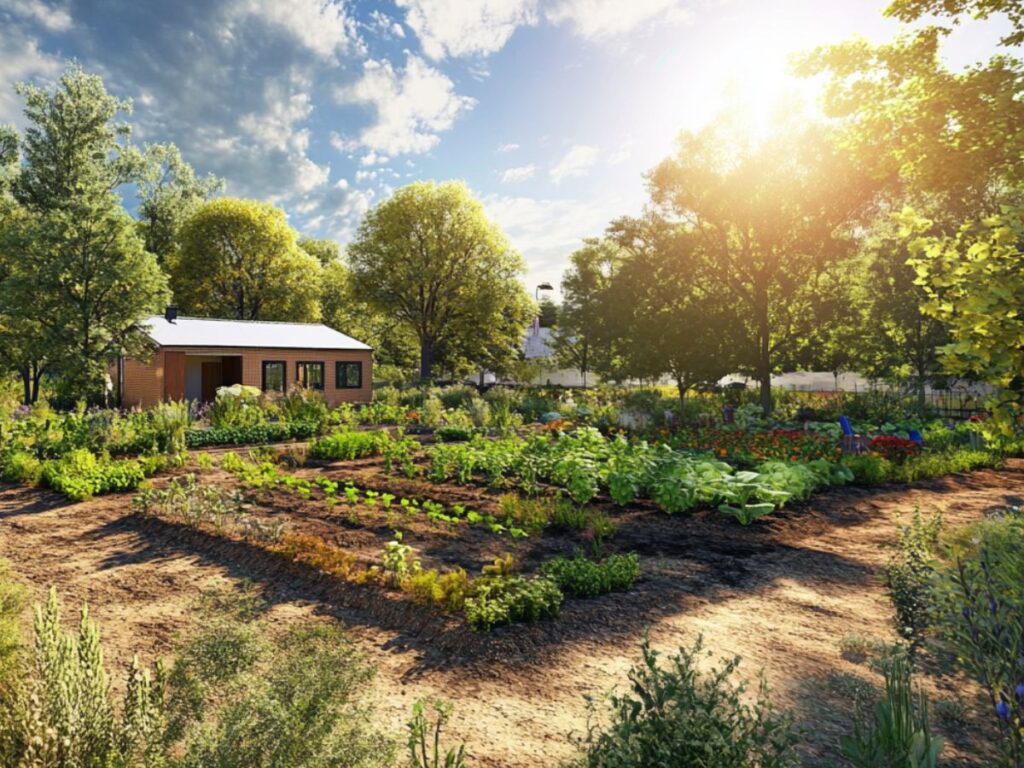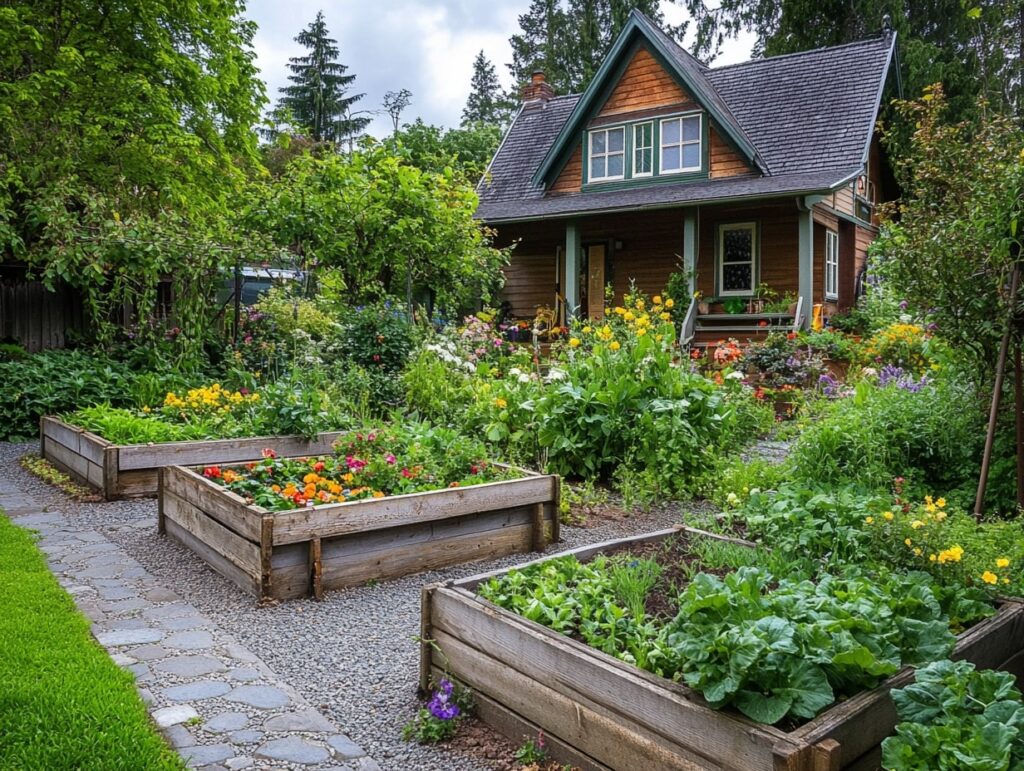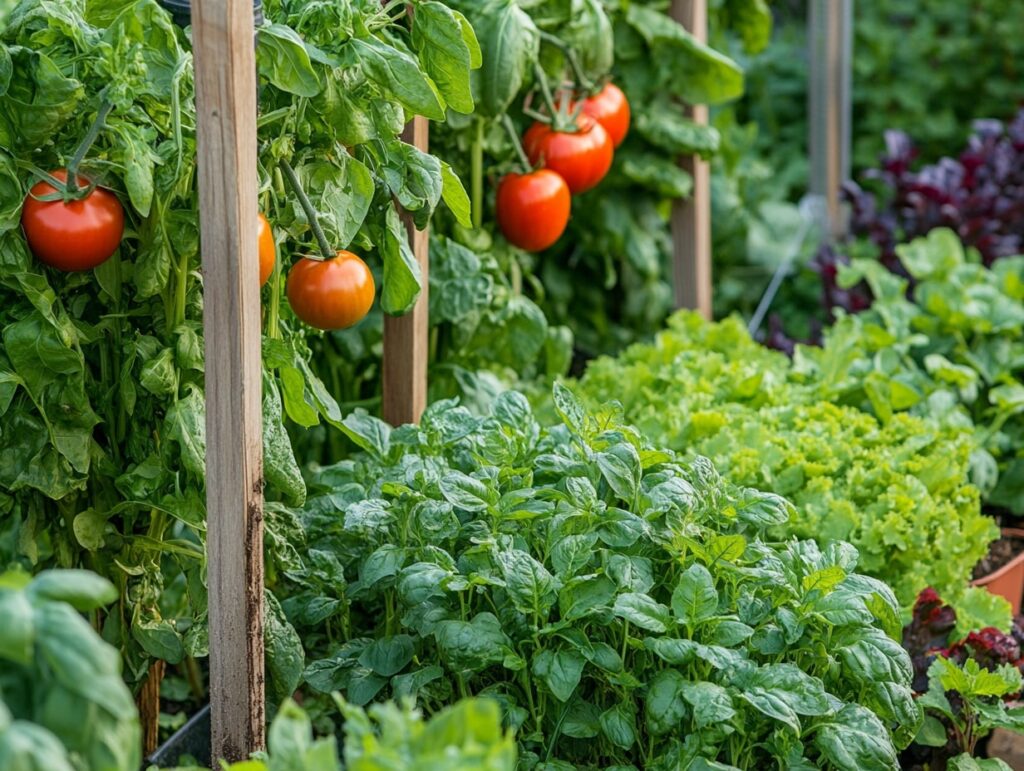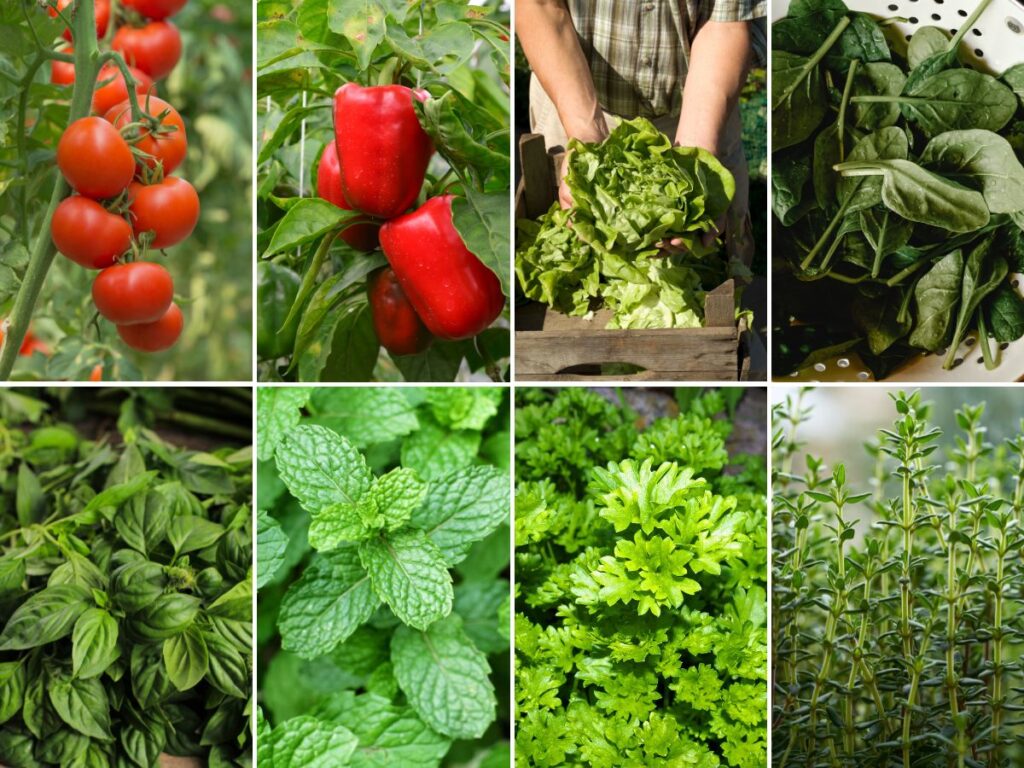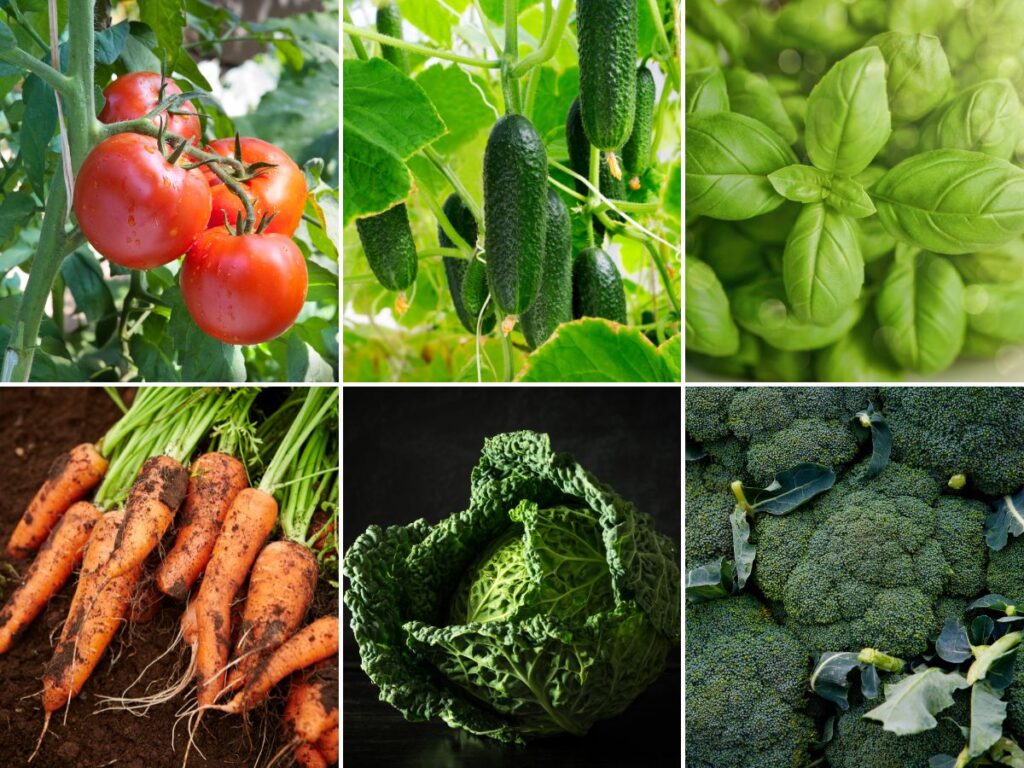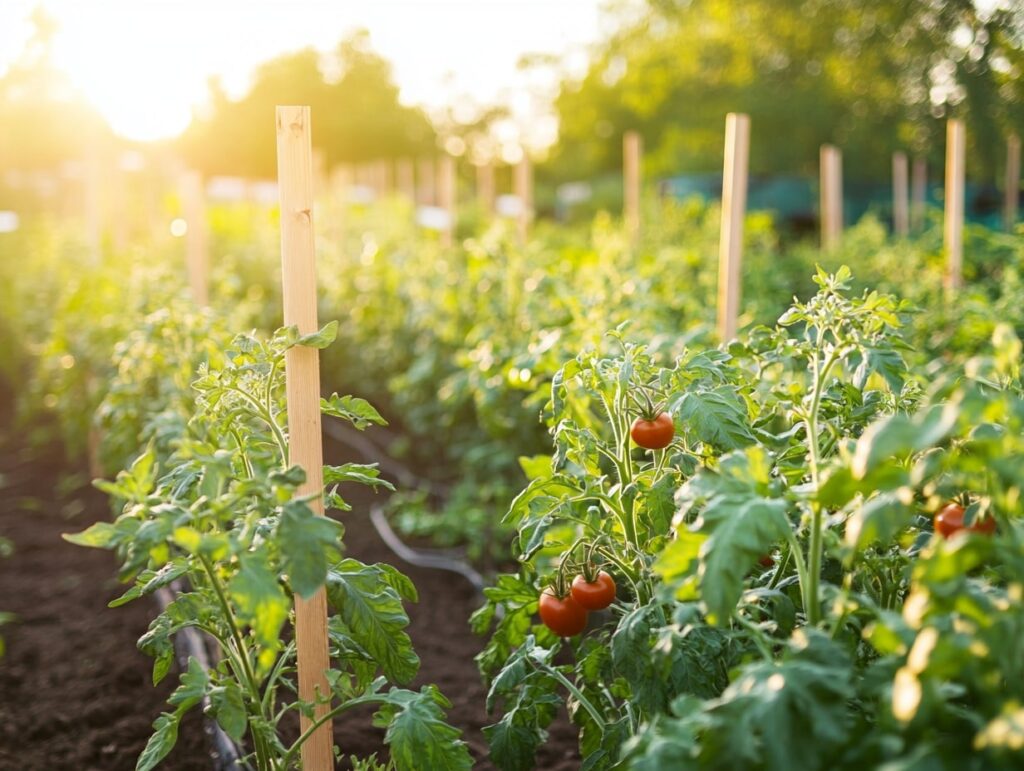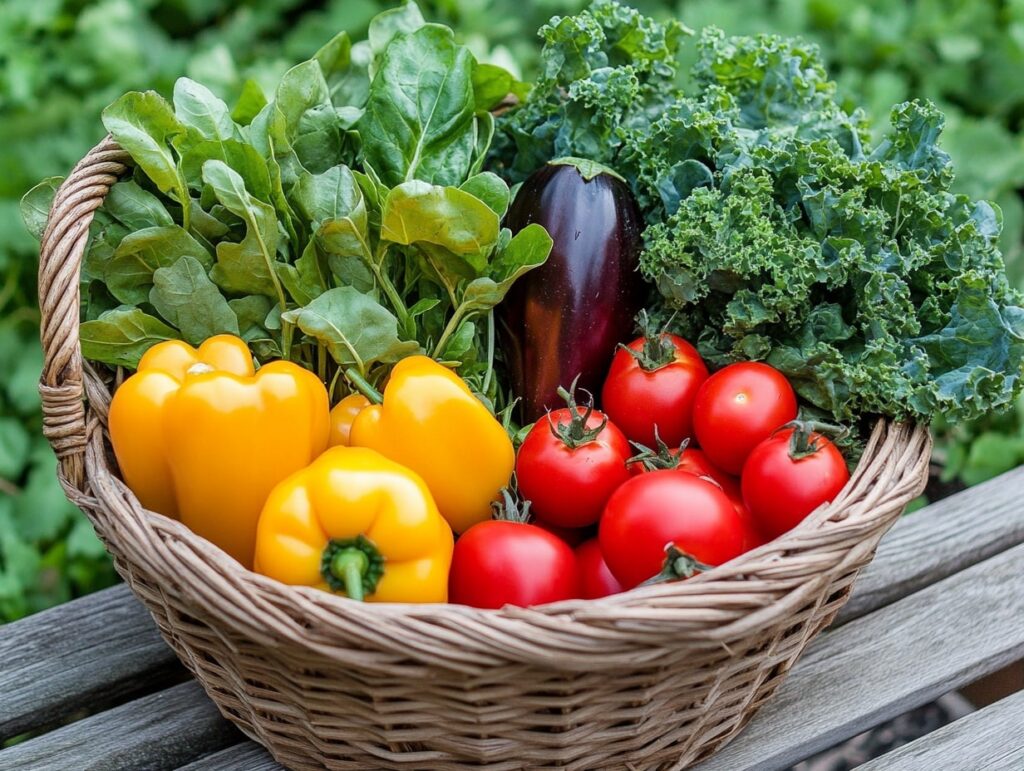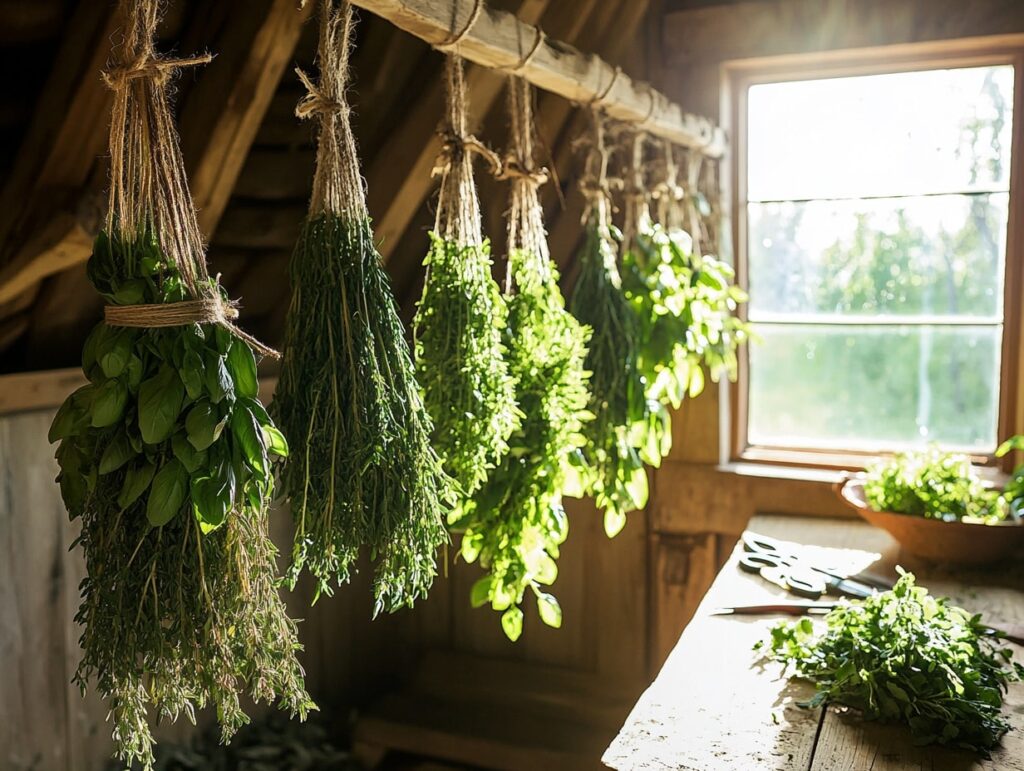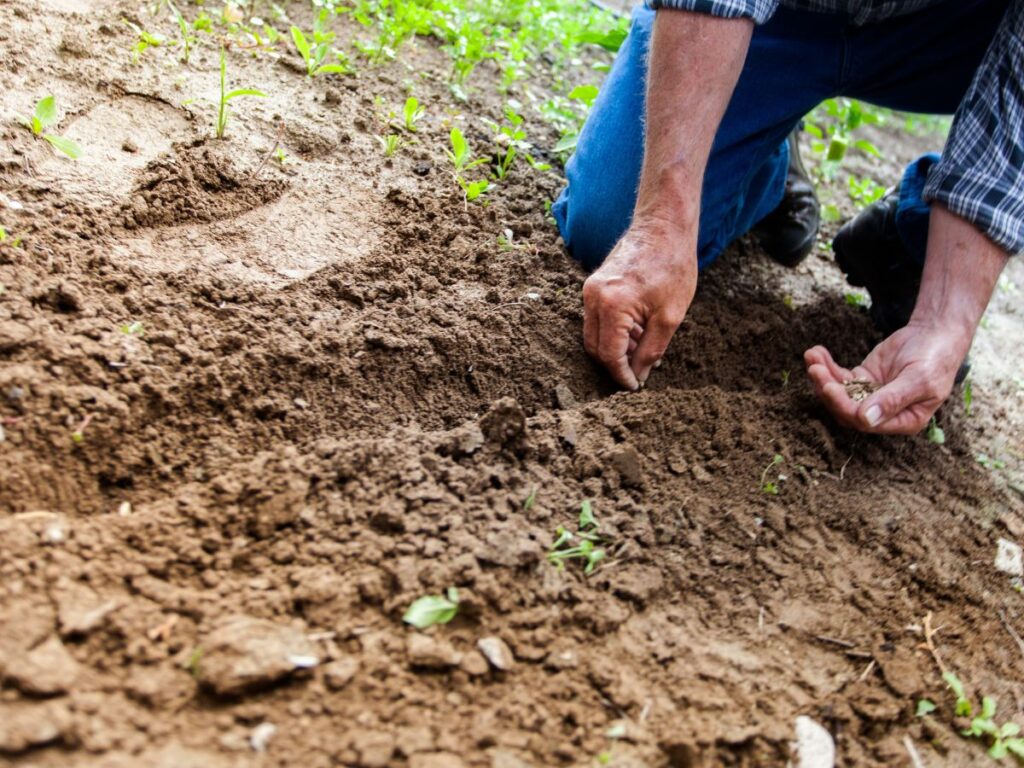Are you tired of lackluster supermarket produce and worried about the chemicals on your family’s food?
Imagine stepping outside to pick fresh, organic veggies and herbs right from your own garden, even if you think you don’t have the space or a green thumb. This guide promises to transform your small area into a lush kitchen garden oasis.
We’ll address common hurdles and provide simple solutions, so you can enjoy the countless benefits of growing your own food. Ready to embark on a rewarding journey toward a healthier, more sustainable lifestyle? Let’s get started!
Getting Started with Your Kitchen Garden
Starting a kitchen garden involves choosing an ideal location with proper sunlight and accessibility, and selecting the right tools to make your gardening efficient and enjoyable.
Choosing the Right Location
Choosing the right spot is the first step. Your garden needs sufficient sunlight, ideally 6 to 8 hours each day, so look for a location that isn’t shaded by trees or buildings. Consider the proximity to your kitchen, making harvesting more convenient.
Drainage is crucial. Ensure the area can handle excess water effectively to prevent plant roots from rotting. If you live in a region with heavy rainfall, raised beds or containers might be beneficial.
Consider the soil quality as well. Rich, loamy soil is best, but you can amend it with compost or organic matter if needed.
Selecting Your Gardening Tools
Equipping yourself with the right gardening tools is essential for a smooth gardening experience. Start with a hand trowel for planting and transplanting seedlings, and a watering can for gentle watering.
Pruning shears are useful for cutting herbs or removing dead growth. Don’t forget a garden fork to loosen the soil and help with aeration.
A wheelbarrow can be extremely helpful for moving heavier items like soil or mulch. For personal comfort, gardening gloves protect your hands and knee pads make kneeling while planting and weeding more comfortable.
A simple garden hose with a spray nozzle helps cover larger areas effectively. These tools ensure that each gardening session is productive and enjoyable.
Planning Your Garden Layout
Creating a functional kitchen garden layout involves understanding how much space each plant needs and considering which plants grow well together. Thoughtfully planning these elements will optimize your garden’s productivity.
Understanding Plant Spacing
When planning plant spacing, consider the mature size of each plant. This ensures every plant gets enough sunlight and nutrients.
A common mistake is planting too closely, which can lead to overcrowding and reduced yields. Refer to the seed packet or a gardening book for specific spacing requirements.
Use a grid system or draw a simple sketch to visualize your layout. Raised beds are popular as they help organize space efficiently. Keep pathways clear to avoid damaging plants as you tend to your garden.
Incorporating Companion Planting
Companion planting helps certain plants to thrive together by deterring pests or enhancing growth. For example, planting basil near tomatoes can help repel insects while boosting the tomatoes’ flavor.
Avoid combinations that can hinder growth, such as onions and peas. It’s beneficial to prepare a list of companion plants and incompatibles for easy referencing.
Use this practice not only for better yields but also to promote a healthy, balanced garden ecosystem. Consider alternating rows with different plant types to maximize space and resource use.
Selecting Your Plants
Choosing the right plants for your kitchen garden involves considering your taste preferences, the space available, and what thrives in your climate.
Whether you want an abundant supply of fresh herbs or a variety of vegetables, making informed choices is key to a successful garden.
Deciding on Vegetables and Herbs
Consider what you enjoy eating and cooking. Make a list of your favorite dishes, and note the ingredients you often use. Popular choices include tomatoes, bell peppers, lettuce, and spinach, as they’re versatile and commonly used in many recipes.
For herbs, basil, mint, parsley, and thyme are great options and easy to maintain.
Assess the space available in your garden. Different plants require different amounts of space.
Tomatoes may need staking as they grow taller, whereas lettuce grows well in smaller areas, like containers or small plots. It’s useful to plan out a layout before planting, to ensure efficient use of space.
Opting for Seasonal Choices
Planting according to the seasons ensures that your vegetable garden remains productive throughout the year. Spring and summer are ideal for warm-season plants like tomatoes, cucumbers, and basil, which thrive in warmer temperatures.
For the cooler months, consider carrots, kale, and broccoli, as they perform better in cooler weather.
Research your local climate and the growing seasons specific to your area. Utilize resources such as local gardening clubs or online forums to gather insights on which plants perform best in your region.
Keep an eye on weather patterns, as unexpected changes might affect the growth of your plants.
By carefully selecting your plants, you can enjoy a productive and satisfying kitchen garden that caters to your culinary needs and seasonal changes.
Planting and Maintaining Your Garden
When you begin planting your kitchen garden, understanding how to start seeds, water correctly, and manage pests is key. Here’s a step-by-step guide on how to do this effectively.
Seed Starting and Transplanting
Begin by selecting a variety of seeds suited to your region’s climate. Use seed trays with a good-quality potting mix.
Keep them in a warm, sunny location, and water lightly. Germination usually takes between 7-21 days. Once seedlings develop two to three true leaves, they’re ready for transplanting.
Transplanting requires care to avoid damaging young roots. Prepare your garden bed by loosening the soil and adding compost. Space the plants based on their expected size.
Gently remove seedlings from their trays and plant them into the soil at the same depth they were growing in the tray. Water thoroughly after transplanting.
Watering and Feeding
Consistent watering is crucial for a thriving garden. Aim to water early in the morning or late in the evening to minimize evaporation.
The amount depends on the plant type and local weather conditions, but most plants need around 1 inch of water per week. Drip irrigation systems are efficient for larger gardens.
Feeding your garden is equally important for healthy growth. Use organic fertilizers or compost to enrich the soil every few weeks. It’s essential to follow the fertilizer instructions to avoid over-fertilizing, which can harm your plants.
Adjust based on soil tests to meet your garden’s specific nutrient needs.
Pest and Disease Management
Keeping pests and diseases at bay requires vigilance. Start by encouraging beneficial insects like ladybugs and spiders that prey on harmful insects. Use physical barriers such as nets or row covers to protect your plants from larger pests.
For disease management, rotate crops each season and remove any infected plants immediately to prevent spread.
If chemical intervention becomes necessary, choose organic options that are safe for edible plants. Regularly inspect your plants for unusual spots or discoloration, which are often early signs of trouble.
Harvesting and Enjoying Your Produce
Knowing when and how to harvest your garden goodies ensures you get the best flavors and nutrition. Proper storage and preservation techniques can help extend the enjoyment of your produce well beyond the growing season.
Recognizing Harvest Time
Keep an eye on your plants to determine the perfect time for harvesting. Each fruit or vegetable has signs that signal when they’re ready.
For example, tomatoes are best picked when they’re firm and fully colored. Carrots should show bright coloring and the tops just peeking through the soil.
A simple touch test can confirm maturity—gently squeeze. If it feels firm yet gives a little pressure, it’s time to pick.
Keep track of average maturity days for each crop. A garden journal helps manage this. Early morning is usually the best time to harvest for maximum freshness and flavor.
Storing and Preserving Your Harvest
Once you’ve gathered your produce, proper storage is key to keeping it fresh. Root vegetables like carrots and beets store well in cool, dark places.
Leafy greens, such as lettuce, benefit from refrigeration in perforated bags. If you have surplus produce, consider options like freezing or canning to conserve nutrients long-term.
Drying herbs is a popular method. Hang them in bundles in a well-ventilated area. Pickling not only preserves but can add delightful flavors to your veggies.
Enjoy crafting homemade jams from your fruits, which can be stored in jars. Effective preservation methods help you enjoy garden goodness during off-seasons.
Starting a kitchen garden is an invitation to participate in this cycle consciously. It’s a step toward self-sufficiency, but also a gesture of respect for the processes that sustain us.
In planting a seed, you affirm a belief in the future, in the potential that lies dormant until nurtured.
So pick up that shovel, scatter those seeds, and see what grows—not just in your garden, but within yourself.
